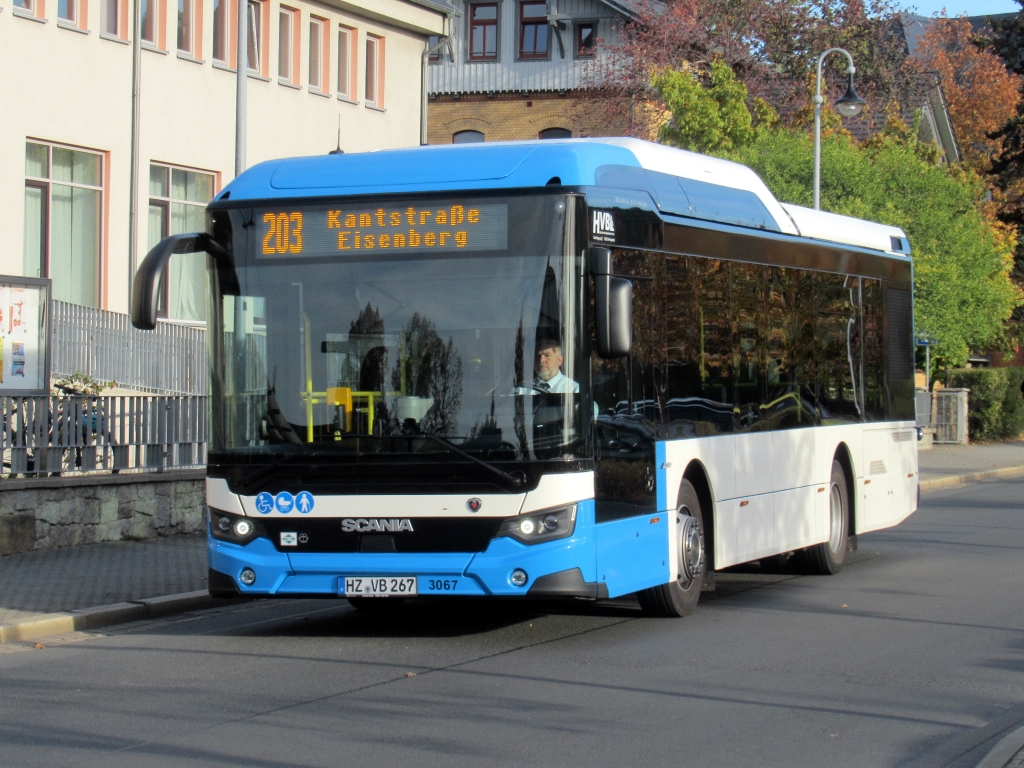
Wernigerode, the “colourful town on the Harz”, was a gem even in GDR times. It is not only a half-timbered town worth seeing, but it is also situated at the foot of the mountain of the Harz par excellence, the Brocken (at 1,142 metres the highest mountain in northern Germany with – quite seriously – a high alpine climate. Wernigerode used to be the district town of the district of the same name, but it has lost this function to Halberstadt since the merger of the districts of Halberstadt, Quedlinburg and Wernigerode to form the “Harzkreis” (registration number HZ). In today’s Harzkreis there were three public transport companies, the Halberstädter Bus Betriebe (HBB), “Q-Bus” from the Anhalt summer residence Ballenstedt and the Wernigeroder Verkehrs Betriebe (WVB) – ex KVG Wernigerode, ex VEB Kraftverkehr Wernigerode. The three were united with the district reform to form the “Harzer Verkehrs Betriebe (HVB)”. And because the WVB from Wernigerode was the largest of the three merged companies, Wernigerode became the headquarters of the new HVB. Note: Of course the district town of Halberstadt is the largest municipality in the new Harz district. But Halberstadt has its own local transport company, the HVG (Halberstädter Verkehrs Gesellschaft), which even has a small-size tram service in addition to bus lines.
The city transport in Wernigerode with five lines is operated by the district-owned “Harzer Verkehrs Betriebe” (HVB). They also operate a large number of intercity lines in the district. Among them is a remarkable line from Ilsenburg (also at the foot of the Brocken) on forest roads otherwise closed to traffic to Drei Annen Hohne, a district of Wernigerode, where there is a connection to the “Brockenbahn” of the Harzer Schmalspur Bahnen (HSB).
At the beginning of October, HVB put seven buses into service, which are still unusual for Germany (for the time being). We are talking about seven “Scania Citywide 10.7 LF” numbered 3065 to 3071. Their special feature: they do not run on such well-known “fuels” as electricity or hydrogen, and certainly not on diesel, but – quoting from a Scania press release – “with the power of the country air”. You understand what Mr Scania is trying to tell us? That’s right, they run on biogas. The chassis of the wagons come from the Scania parent plant in Södertälje, Sweden (about 30 kilometres southwest of Stockholm), the bodies from the Scania plant in Slupsk, Poland. The buses have 32 particularly comfortable seats with raised backrests – rather unusual for regular-service buses. So HVB are making a conscious effort to offer their passengers a comfortable ride.
These “Scania Citywide 10.7 LF” are powered by the Scania gas engine “OC 09.104”, which produces 280 hp (206 kW). That’s not bad for a not-so-large bus in the mountainous environs of the Harz region – and ensures that the bus is quite nippy on the road. Jens Ludwigkeit, the sales manager for buses at Scania Germany, says: “This is the most modern and economical gas engine for buses currently on the market.”
Christian Fischer, Managing Director of HVB, adds: “We are optimistic about the future with these buses. The aim of the purchase is to make the hourly transport in Wernigerode more attractive and climate-friendly.”
The gas for the buses is produced exclusively from agricultural waste and straw. “Products that could be used for food are not used!” The bio-methane (biogas) for the new Scania is supplied by the company “Verbio” from Saxony-Anhalt, with the Stadtwerke Wernigerode responsible for “the last few metres” to HVB. HVB Managing Director Fischer: “By using the new Scania, we save 100,000 litres of diesel. That corresponds to 300 tonnes of CO2. That is 90 % less CO2 emissions,” In other words, the new Scania Citywide 10.7 LF are almost climate-neutral on the road.

During the presentation of the seven new Scania buses, Wernigerode’s mayor Kramer reported that the buses had already undergone an unusual operation. In the first days of October, a large-scale forest fire had broken out below the summit of the Brocken, and the hikers who were on top of the mountain had to be evacuated. They sent the new Scania up the mountain, and they brought all the people back to the valley unharmed. “The buses have to be able to do that too,” says Kramer. Not only drive in the valley on comfortably paved roads, but also under adverse conditions at 1,100 metres above sea level.”
Workshop manager Dirk Blum says: “Diesel buses have a complicated exhaust aftertreatment system because it relies on high temperatures.” That’s why it requires a relatively large amount of work in the workshop. With gas engines, exhaust gas aftertreatment hardly plays a role.
22.10.2022
